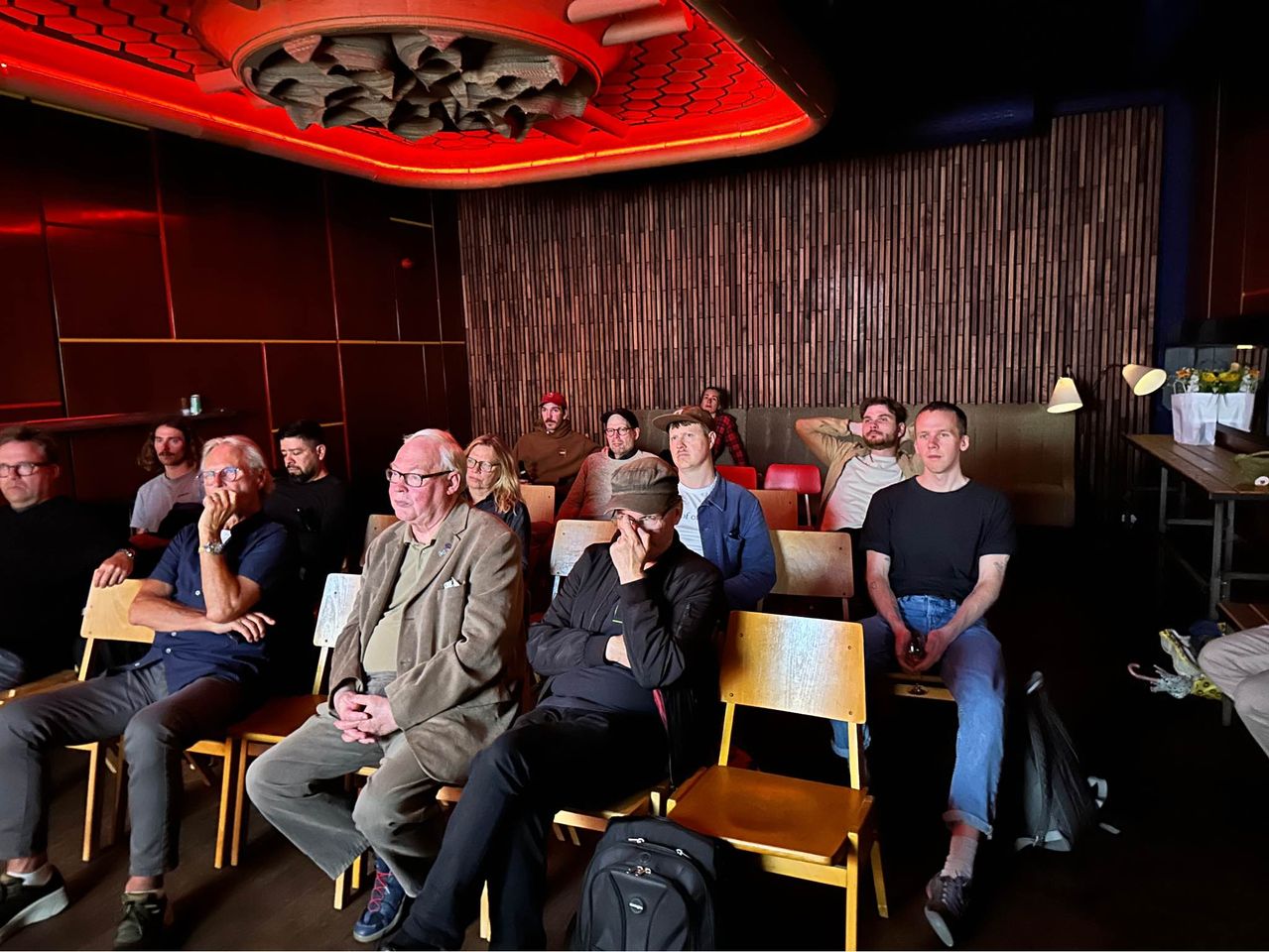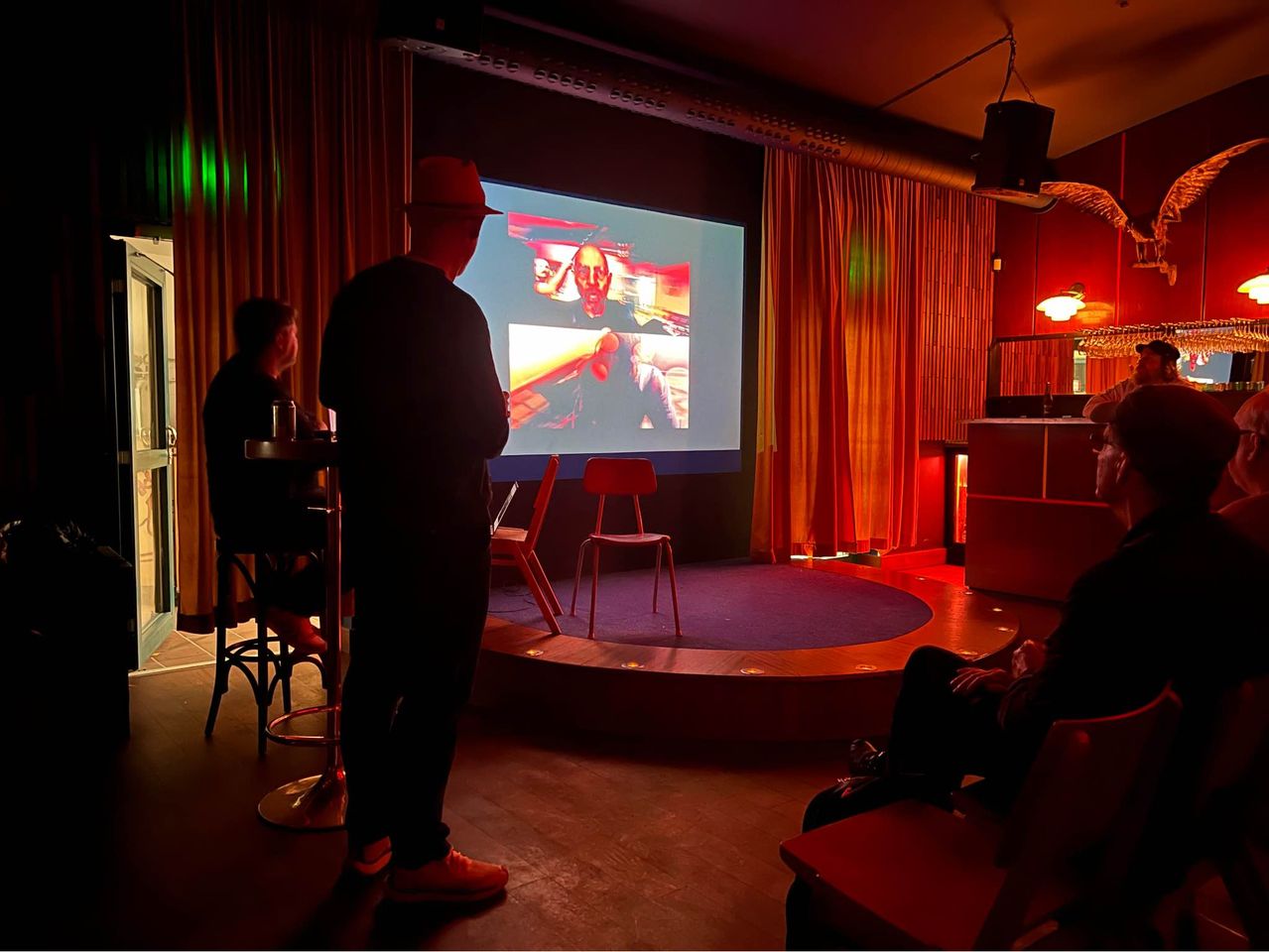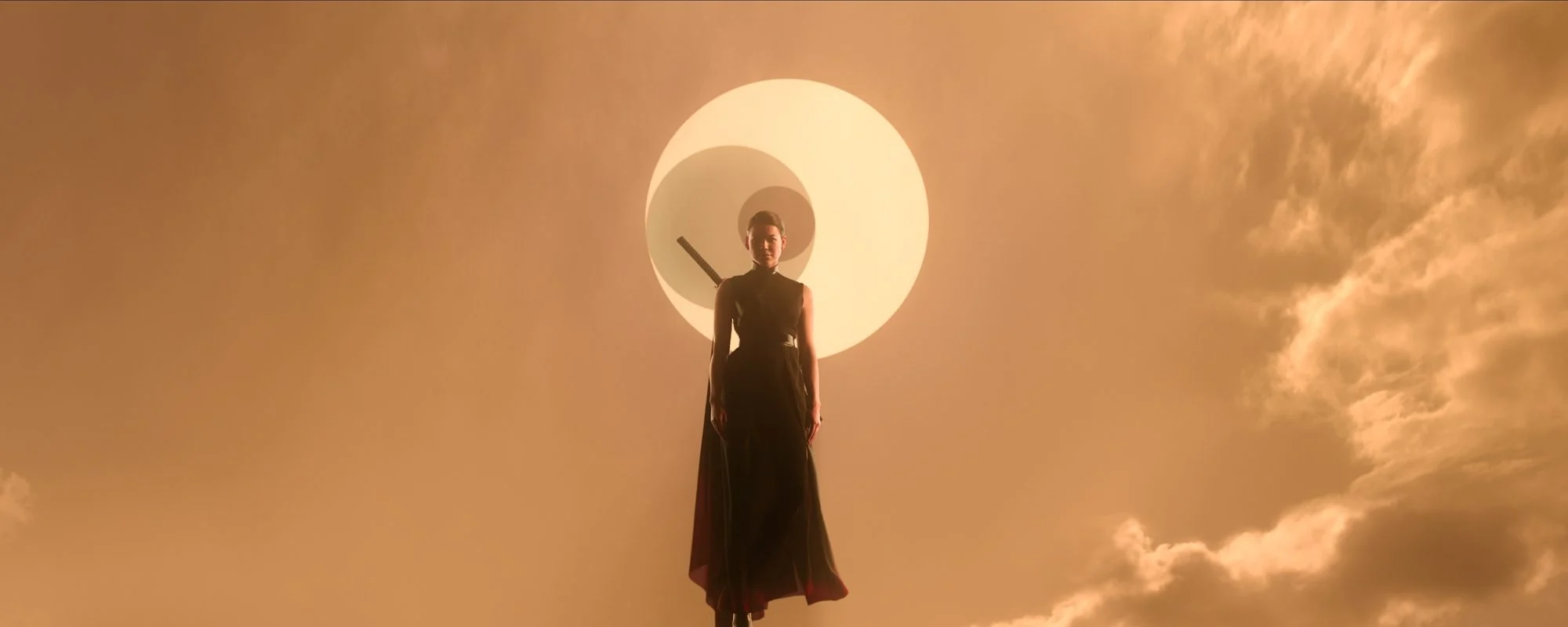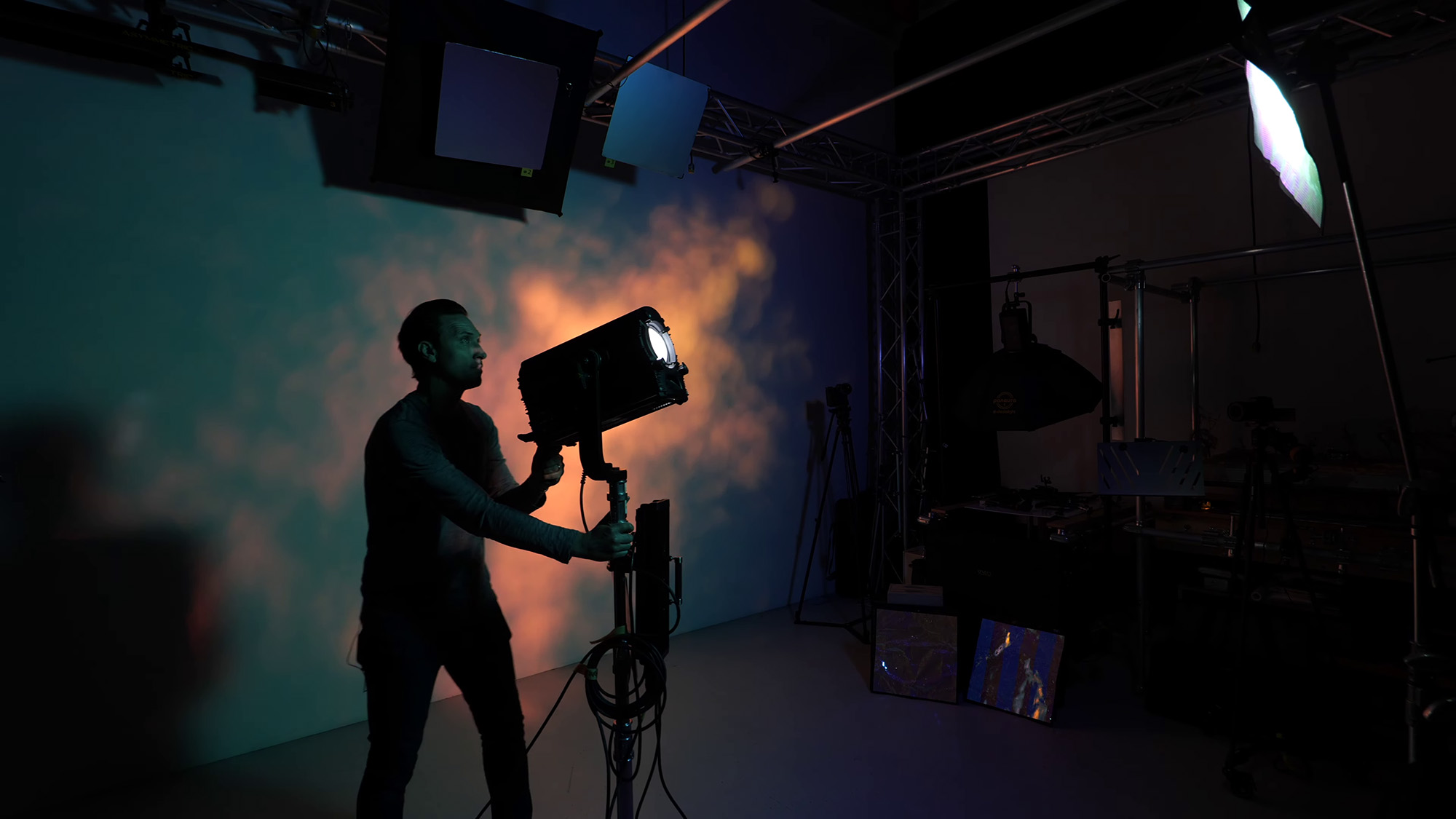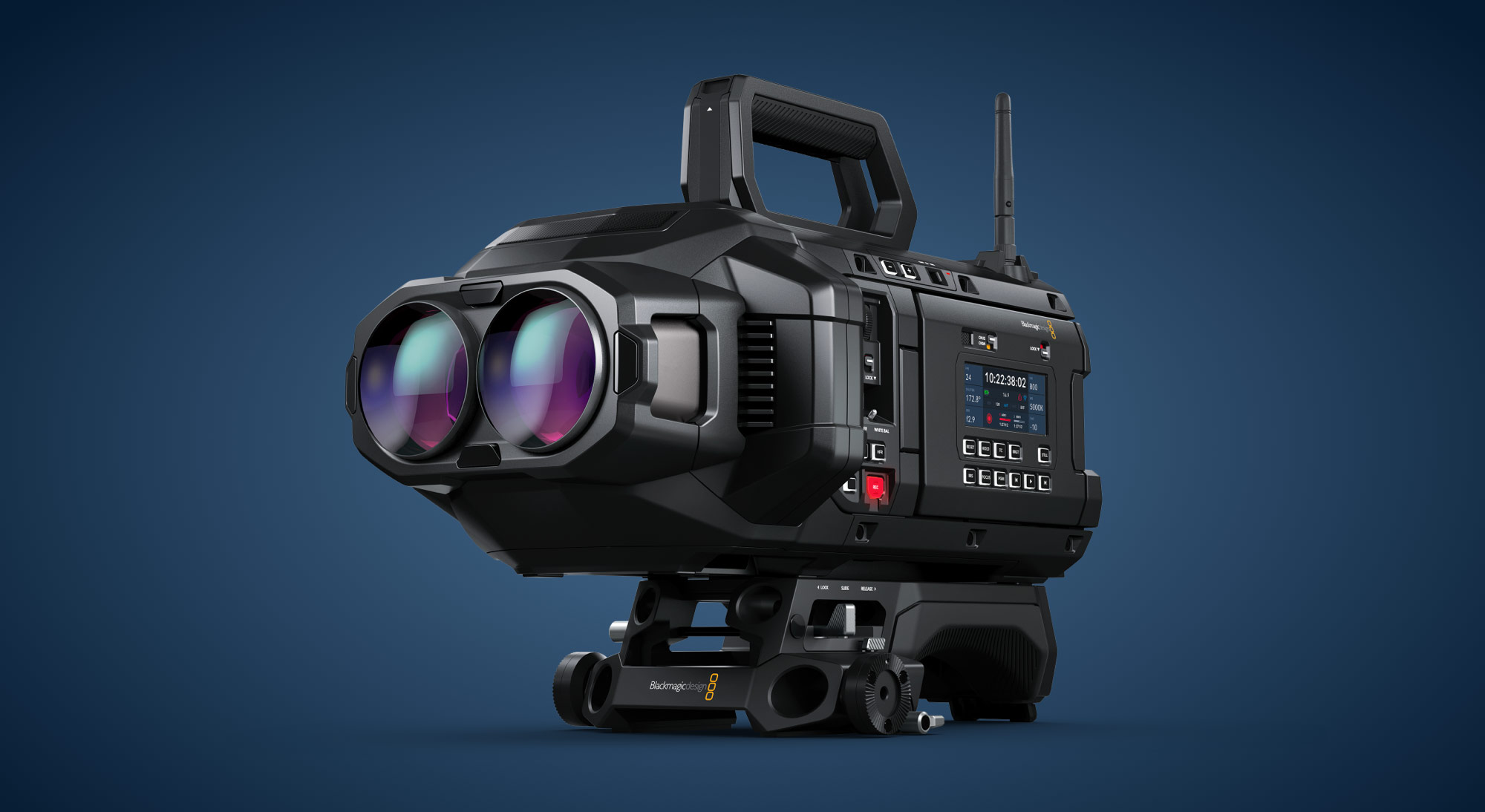Jakob Ihre Masterclass at Gothenburg Film Studios
On Monday August 24th, a Masterclass featuring celebrated cinematographer Jakob Ihre FSF was held in Gothenburg Sweden at the Gothenburg Film Studios facilities. The actual lecture was held at the Studiocafé which, as the name implies, is a café within the studio complex. In this location, and under the aegis of the Studiocafé, activities are also regularly arranged for film-interested youths in the shape of lectures, gatherings and film projects, supported by the City and region of Gothenburg.
The Masterclass is the result of a collaboration between Kulturakademin, Gothenburg Film Studios, Film i Väst and FSF, the Swedish Society of Cinematographers. Interest in attending the Masterclass was very encouraging, but for COVID-19 reasons, the number of attendants in the auditorium was capped at 40 persons. RED Rental by MAAN, who also have their Gothenburg headquarters in the same building as the Studiocafé, gave invaluable technical support to the event, lending lights, sound and camera equipment. The FSF would also like to express gratitude towards Anders Johansson, who chose to attend the Masterclass as a spectator, and who through his company Mediateknik AB has been an untiring supporter to the FSF’s activities for several years now.

Jacob Ihre, FSF
Jakob Ihre, who opens the proceedings by sharing with the audience that “Gothenburg is my home town”, chooses to focus on a handful of subjects for this Masterclass. For instance, how to prepare for a film project… what is motivating the camera ́s language… does the light need to be dictated by the script?
Ihre promises to take his audience ”on a personal and artistic journey to dig deep into the the art of cinematography”, and he doesn’t let them down. He has shot 15 feature films and many documentaries and commercials, and he shows extracts from the films Procter, Odessa…Odessa, Reprise, Oslo August 31st, The end of the tour, Chernobyl and Dispatches from Elsewhere to illustrate the various topics discussed. He has also brought along some interesting examples of how a scene can evolve from the written script page, via the shotlist, to the finished cut film.
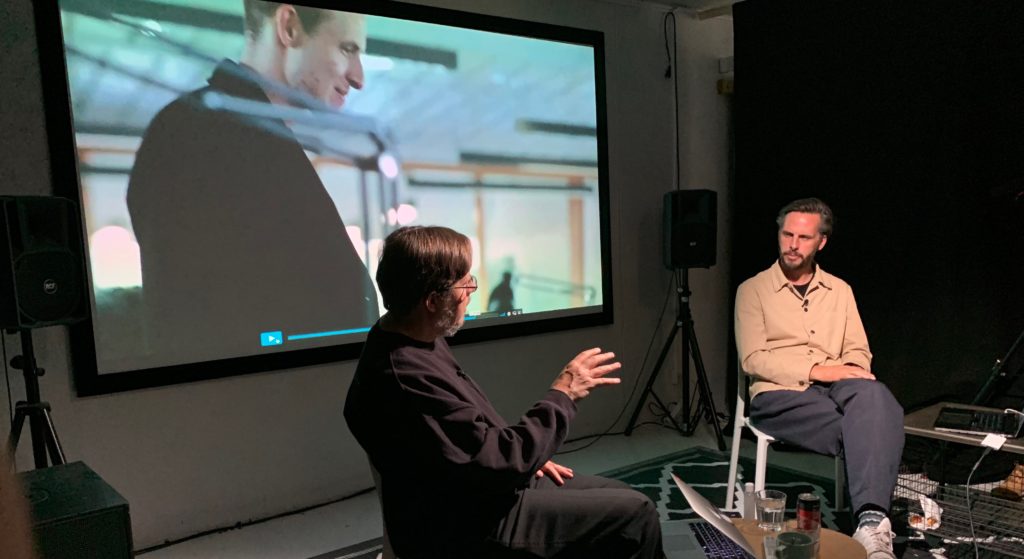
Lars Pettersson FSF in conversation with Jakob Ihre FSF during Masterclass at Gothenburg Film Studios
But let’s get back to the question of how to prepare for a film project. “Every film is unique”, Ihre muses, “and ideally you shouldn’t see any traces of your previous projects on your new project. So how do you accomplish this? Ideas, shots and images from previous films are almost begging to be re-used, adapted or transposed to your new film.
My ambition is to be as honest to the new project as possible, and to not bring a lot of luggage so to speak, but clearly even with the best of intentions it isn’t always possible”. Ihre shows clips which suggest that in spite of his pronounced determination to not let previous work influence new assignments, themes such as strong pools of light having profound significance in the images, or near identical pans across buildings showing up in films shot several years apart, tend to creep into his work nonetheless.
”How do you see this?” is a question Ihre will hear often at the outset of a new project, and the HBO miniseries ”Chernobyl” was no exception in this regard. For his work on this miniseries Ihre has received -quite rightfully and deservedly- an enormous amount of acclaim and prizes, and in preproduction it was decided that anamorphic lenses was the way to go, to emphasize the power of the Soviet Union.
But pretty soon Ihre realized that it wouldn’t be a good fit for the story they wanted to tell, that the filmmaking technology used should call less attention to itself, and he therefore opted to shoot this project on a set of vintage Cooke Panchros -and not even rehoused ones, mind you. Initially Ihre thought ”there’s no way we’re going to need second unit on this,” but sure enough they wound up with multiple crews shooting in parallell. It became a real challenge to hunt down enough of these lenses for the several cameras that eventually became necessary.
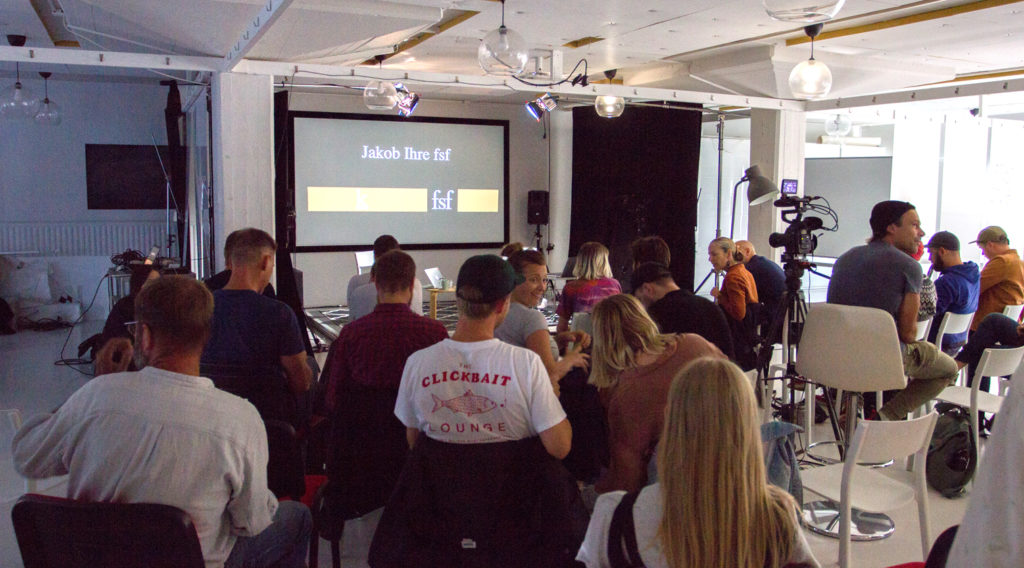
Audience at the Studiocafé
The level of detail and thought which Jakob Ihre invests in his images is sometimes nothing short of extraordinary. He shows clips from Odessa…Odessa, a documentary shot in Ukraine and Israel, where he deliberately wanted a very stable camera throughout the film. There is so much hand held cinematography today that tracks, tripod and dolly-shots become a statement.
Alreday in the mid-1990s Jakob Ihre was a seasoned free lance veteran cameraman with countless hours of experience from shooting Betacam video for various TV shows. ”I’ve really held on to that part of my early experience in shooting Betacam video”, Ihre volunteers. ”I used to tweak around a lot with the white balance and all the other knobs you could influence your image with on those cameras, so what I’m now doing with LUTs on these modern day cameras that we have now, is really a continuation of that process”.
In the early 2000s, Ihre attended The National Film and Television School in Beaconsfield, England, where he met the director Joachim Trier and they immediately found that they worked extremely well together and embarked on a cinematic journey which today comprises several feature films, such as Reprise, Oslo August 31st, Louder than bombs and Thelma.
Ihre shows a clip from an enormously ambitious -for a film school project- early production from this era, in which a car is set on fire in a vast underground garage. The scene sparks a discussion about safety procedures on film sets, an issue which is sadly very topical at this point in time.
In his experience, on international sets, and particularly on U.K. productions, safety is taken very seriously, and by comparison on many Swedish shoots on which Ihre has worked he feels that the attitude towards safety issues has sometimes been surprisingly relaxed. Although this is a poor excuse, perhaps it could be said in defense of Swedish film productions at large that wild car chases and big explosions are fairly rare here compared to in international cinema, and the potentially dangerous stuff attempted is mostly on the tame side. But Ihre’s experience here goes to show that there is definitely a need for a set of standardized international rules and regulations regarding safety on film sets.
Left to right: Ingrid Domeij GBCT and Michael Kaare Petersen FSF, who operated the cameras during the Masterclass, with Johan Jonsson, manager at Gothenburg Film Studios.
“When directors are in control of the light” is another topic which Jakob Ihre chooses to bring up. To illustrate this point, he shows a scene from the film ”Side Effects” directed and photographed by Stephen Soderbergh, in which two quarreling characters move down a dimly lit New York City sidewalk, with blazing sunshine in the background.
”If I had been in that situation”, Ihre offers, ”chances are the director would’ve said ‘we can’t shoot here, it’ll all be in silhouette -let’s move over to the other side of the street’. But as Soderbergh is both director and cinematographer on this film, he elects to shoot the scene on the shadowy side of the street -and it works fine, the scene is very dramatic and you catch just enough of the actors’ faces to read their expressions”.
But let’s return to ”Chernobyl” just one more time. As previously mentioned, Ihre initially felt this story should be told with one camera only, but situations arose during production where it was more practical to use multiple cameras. Accustomed to operate his own camera, Ihre felt slightly uneasy about this, as it meant partially relinquishing control over shot compositions.
The staff in charge of production on the set sensed Ihre’s unease as he went back and forth between the other camera operators, suggesting compositions and camera angles, and he remembers with a wry smile how they suggested, ”Why don’t you do like a real director of photography -and stand by the monitors!”
Text and photo: Lars Pettersson, FSF
An abridged video of the Masterclass can be found HERE

